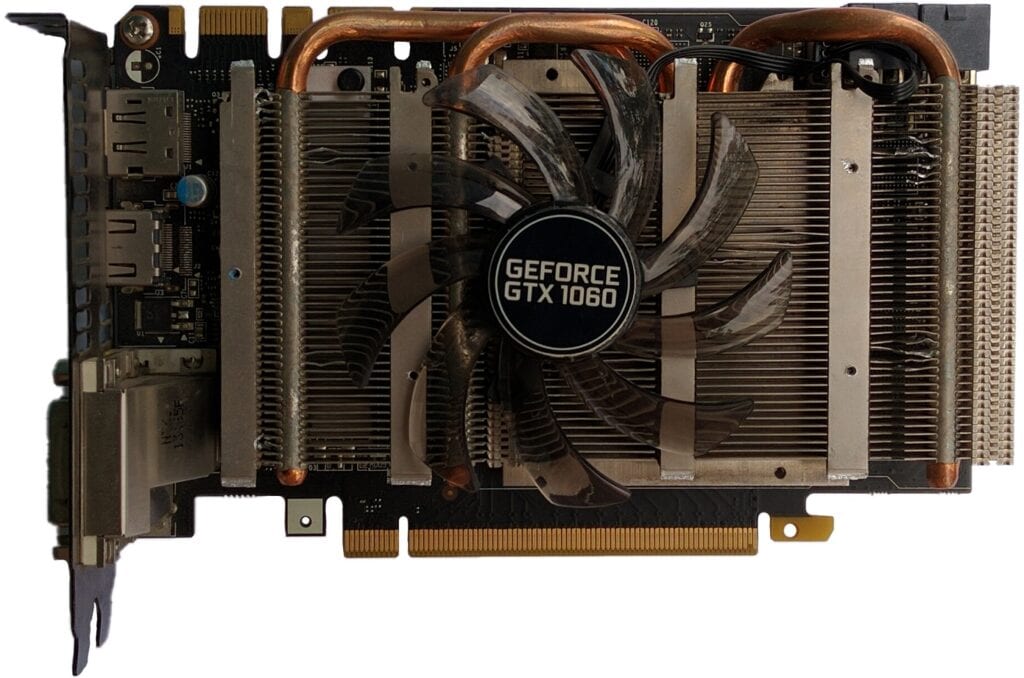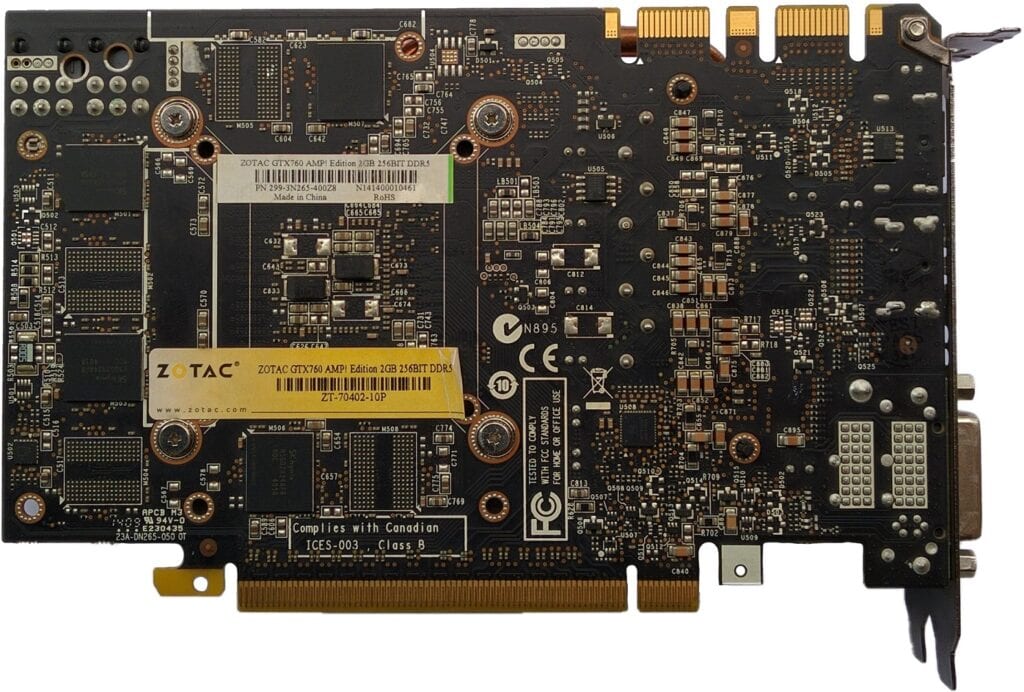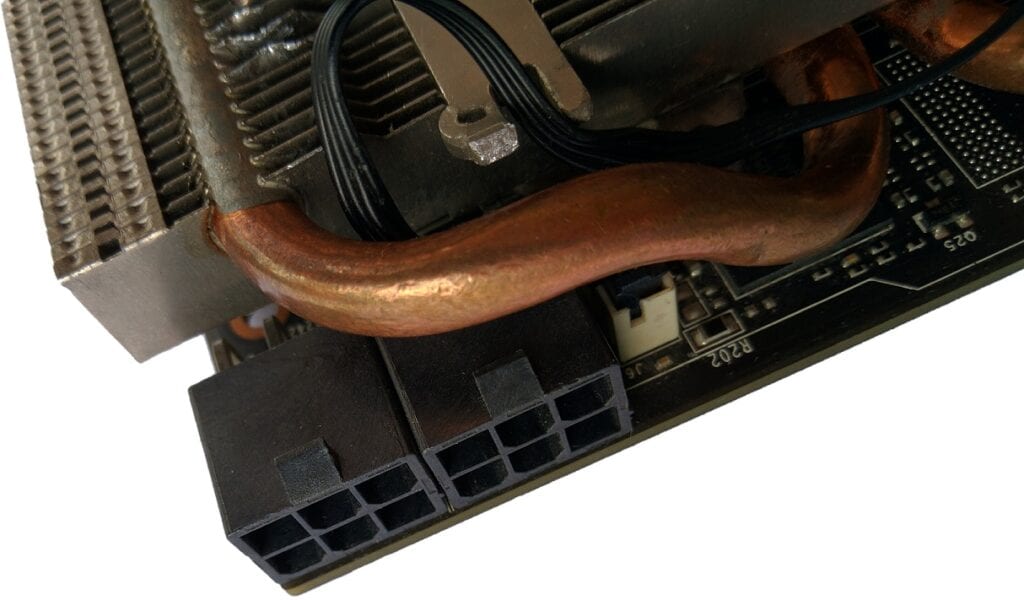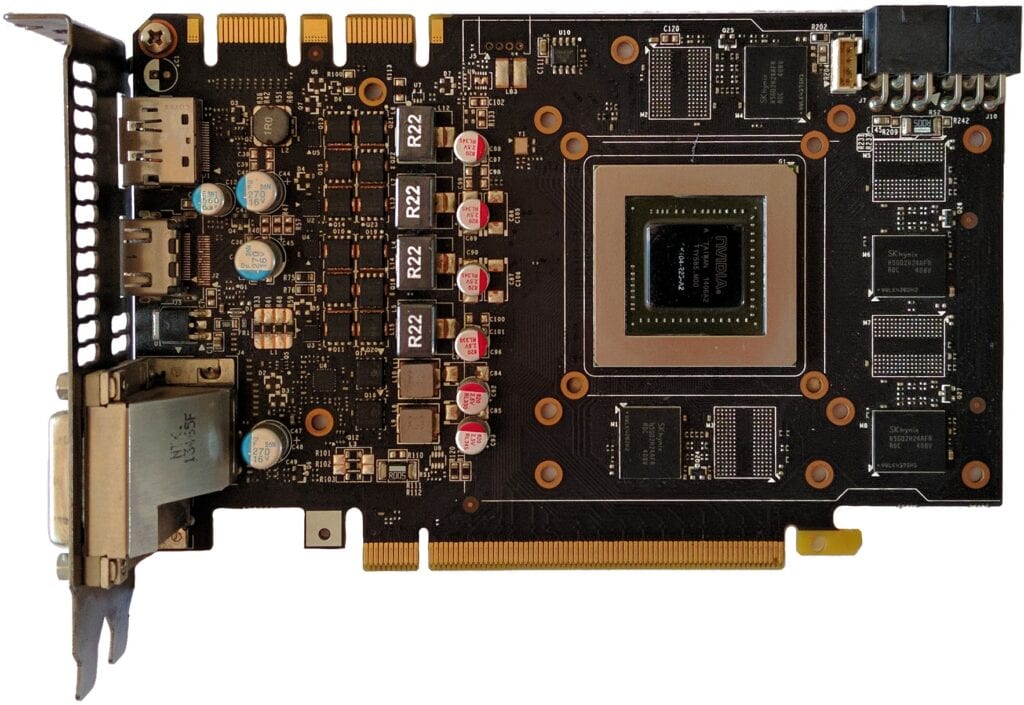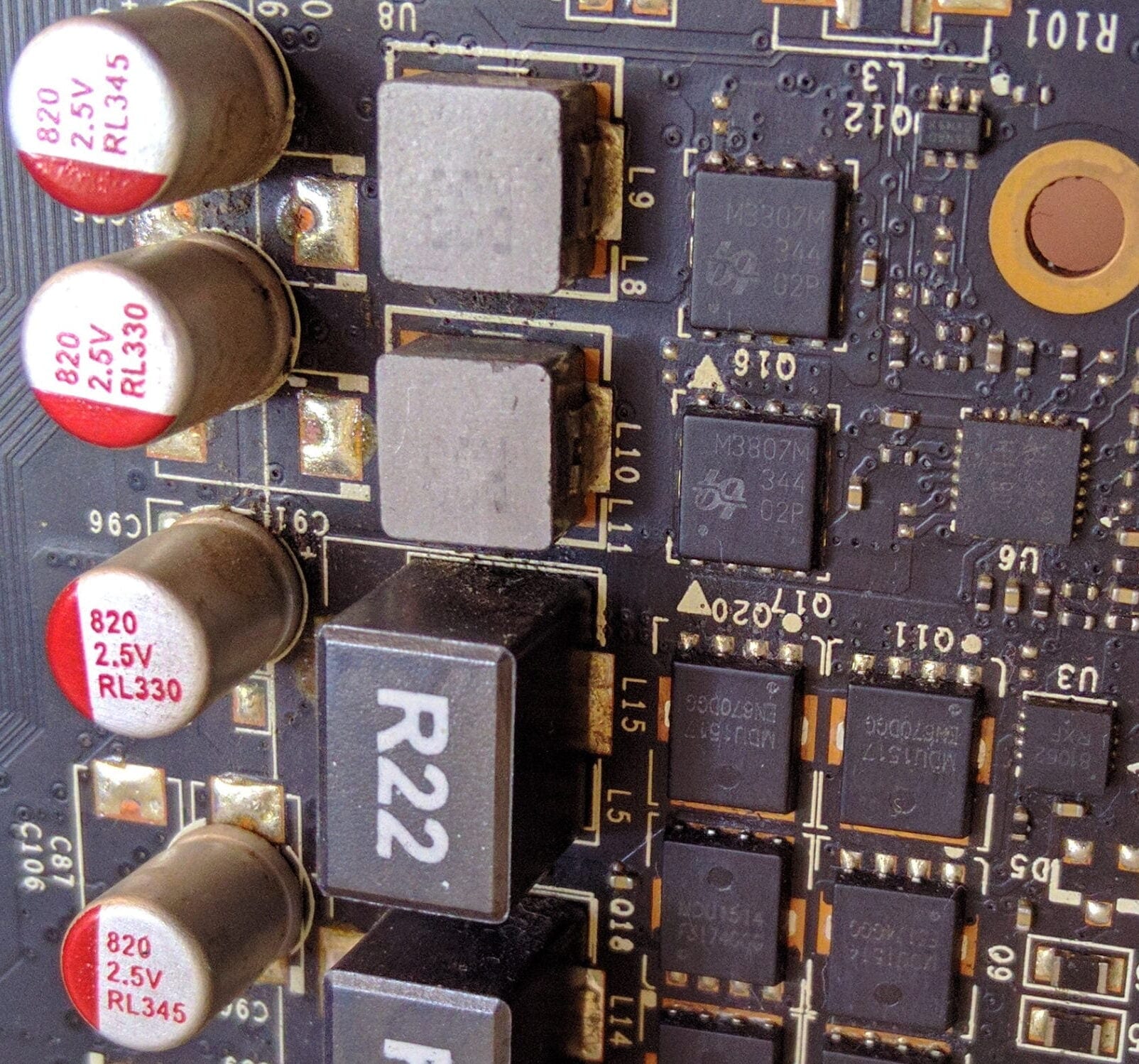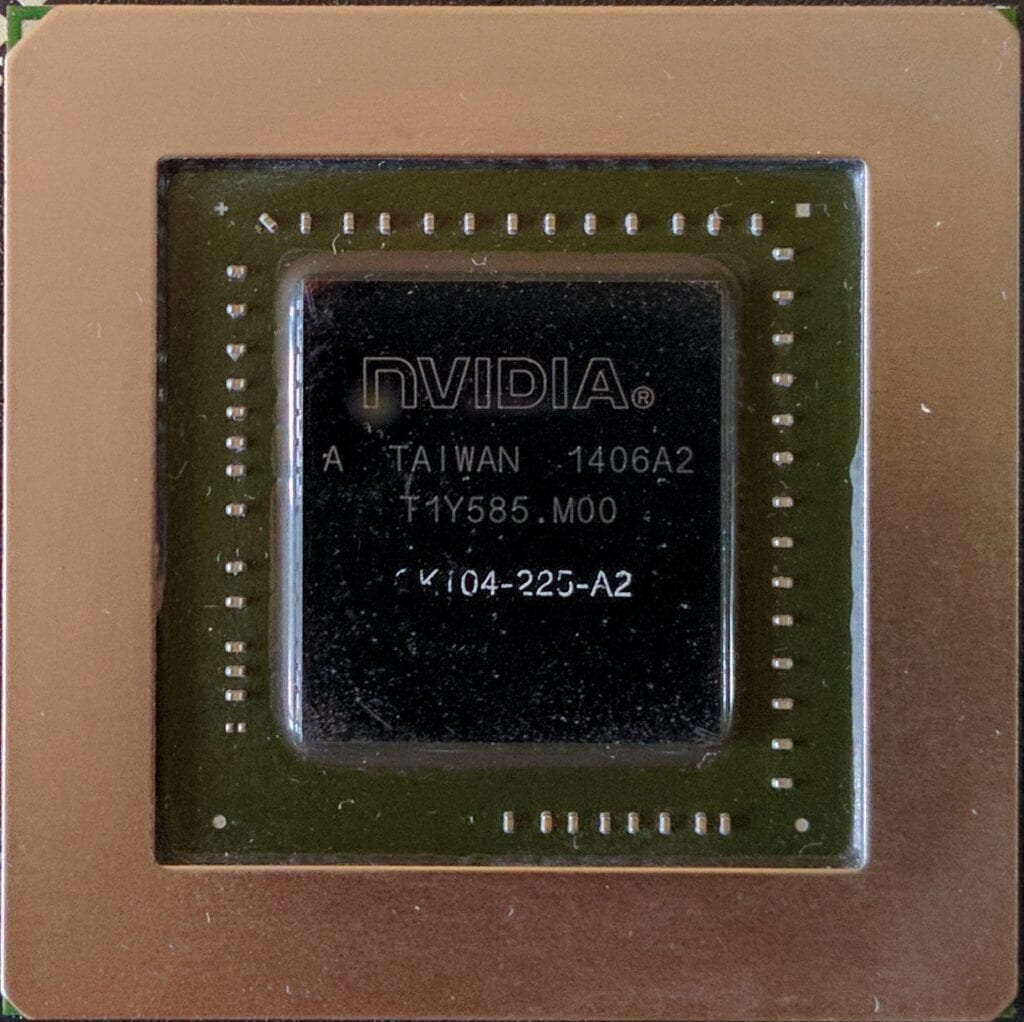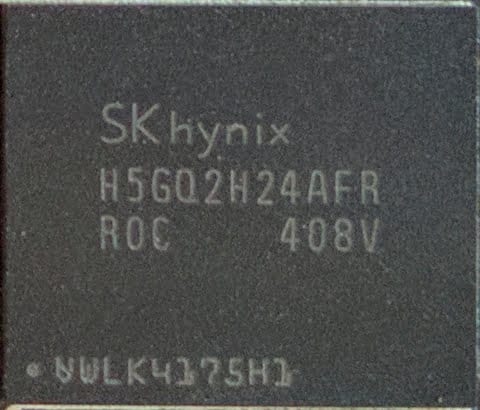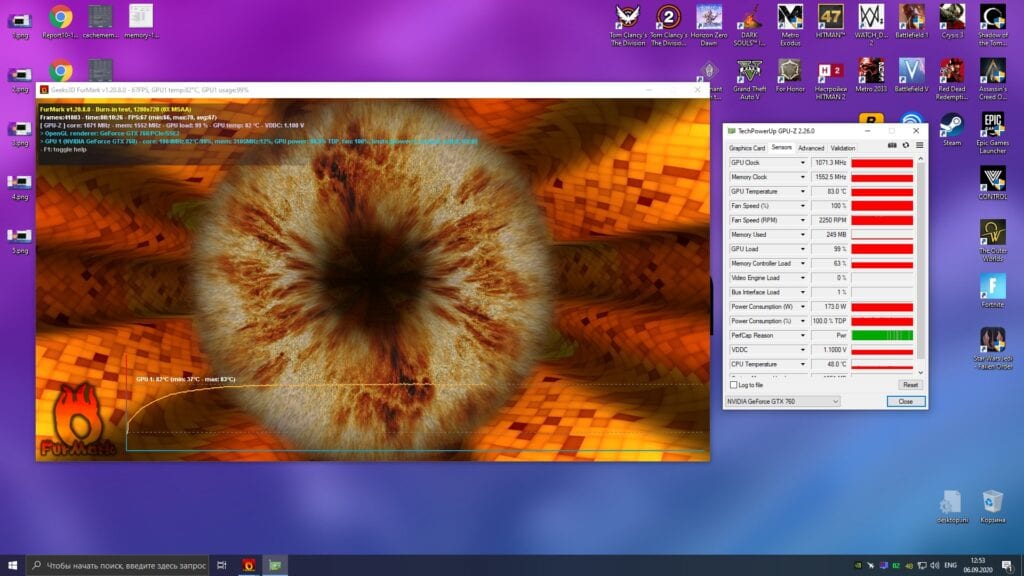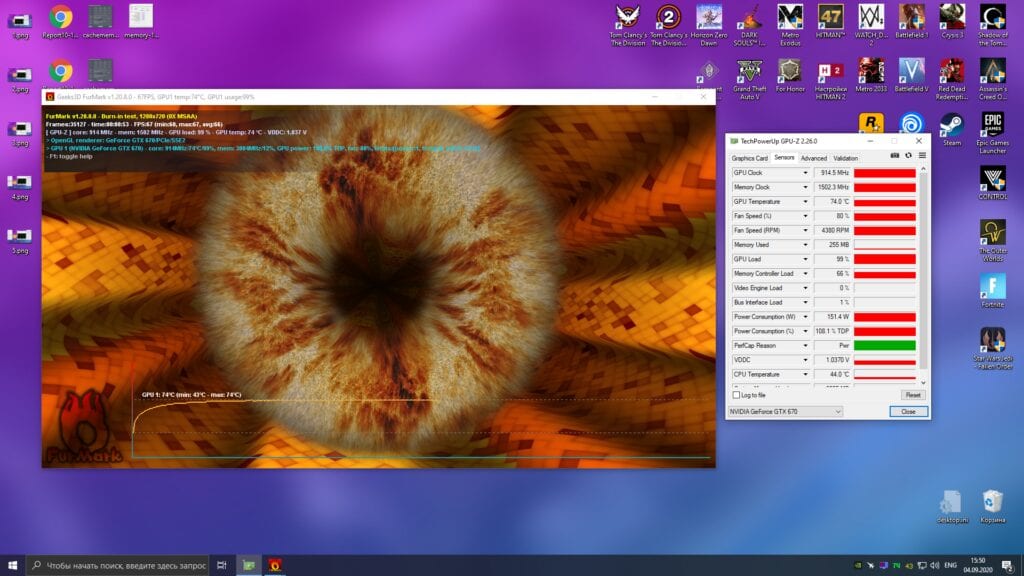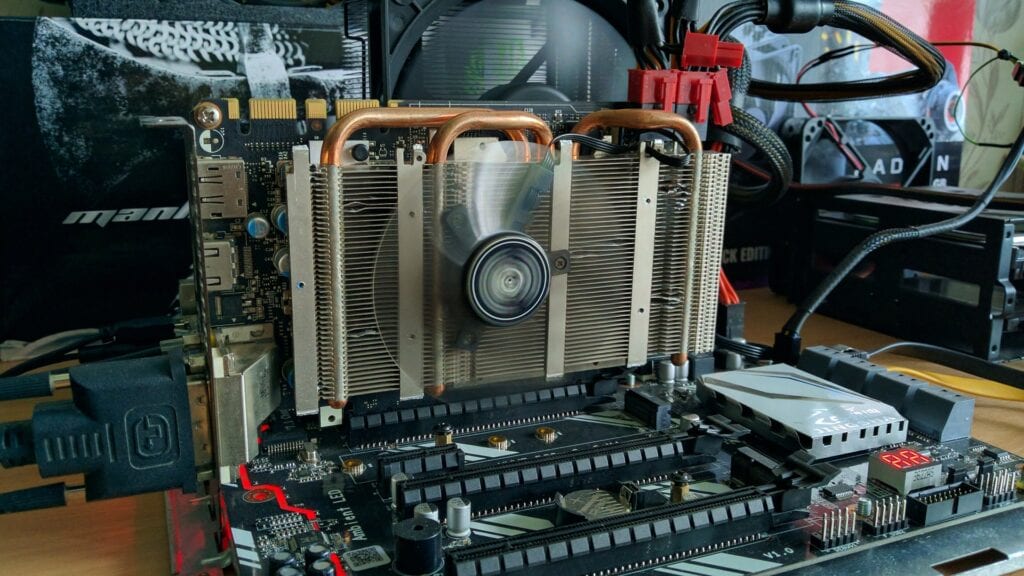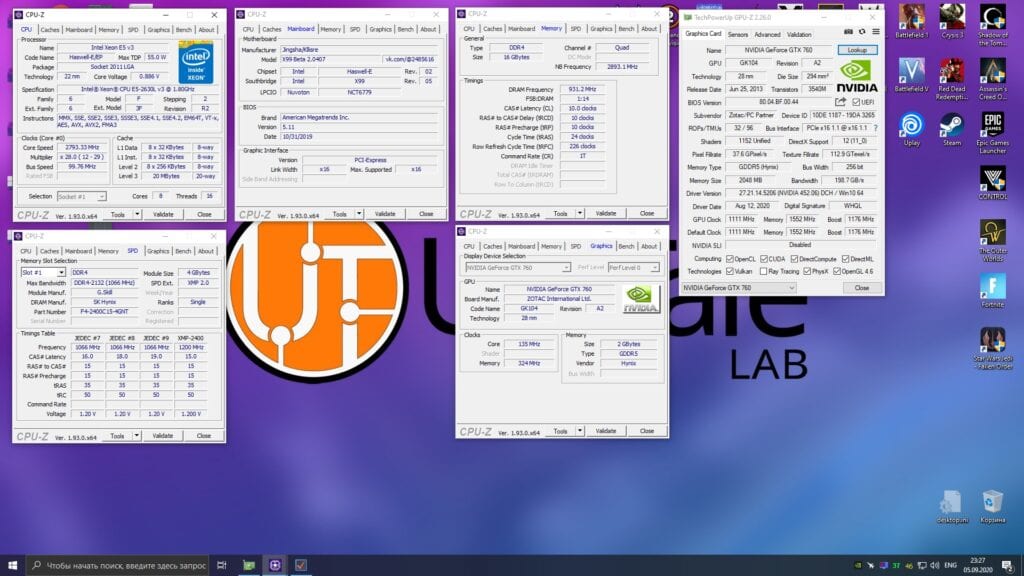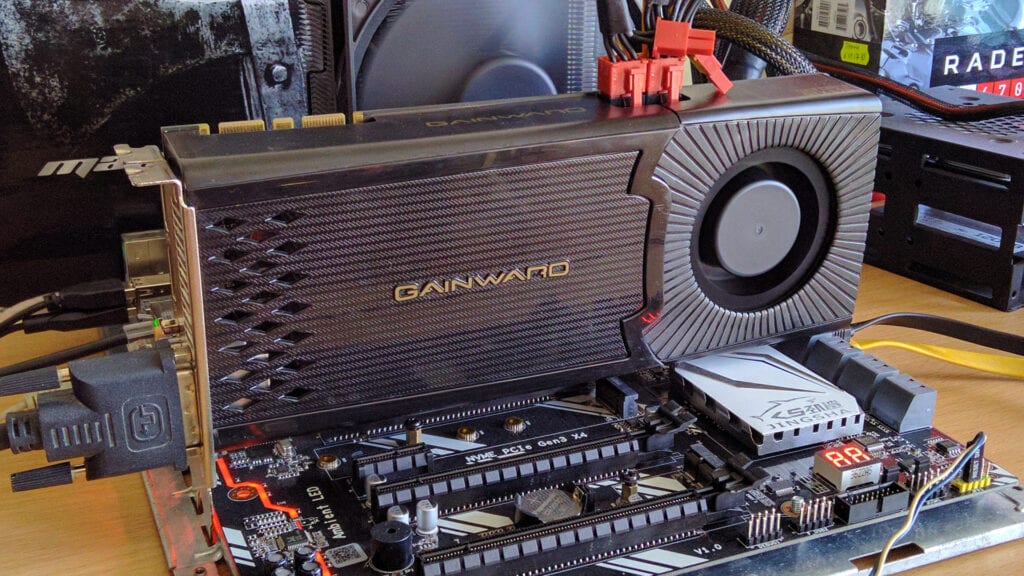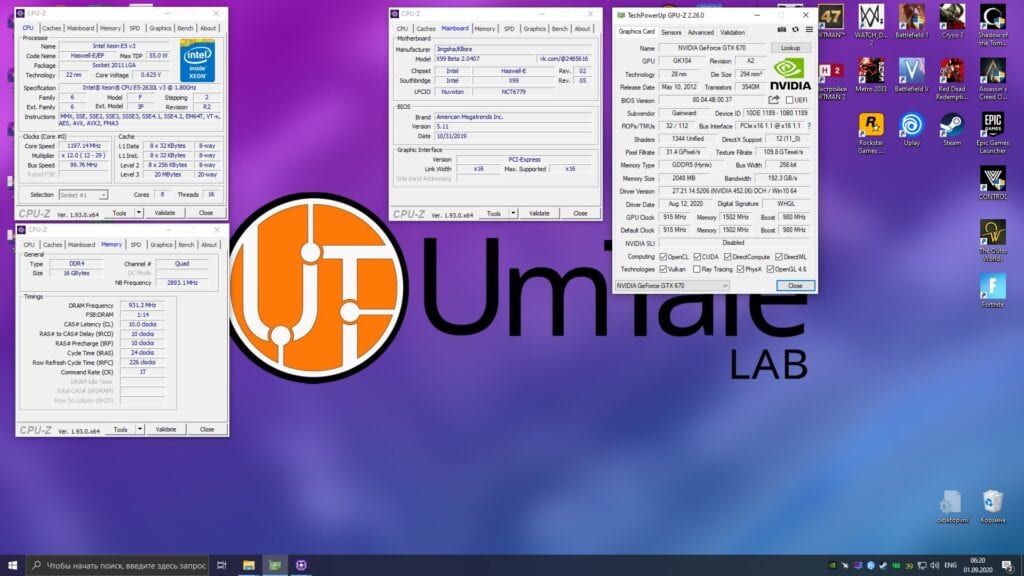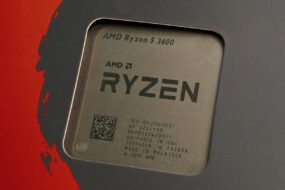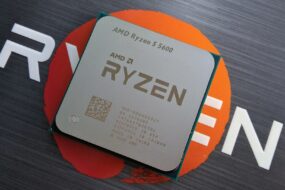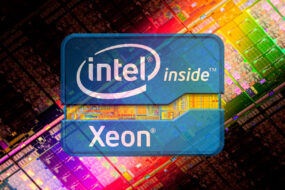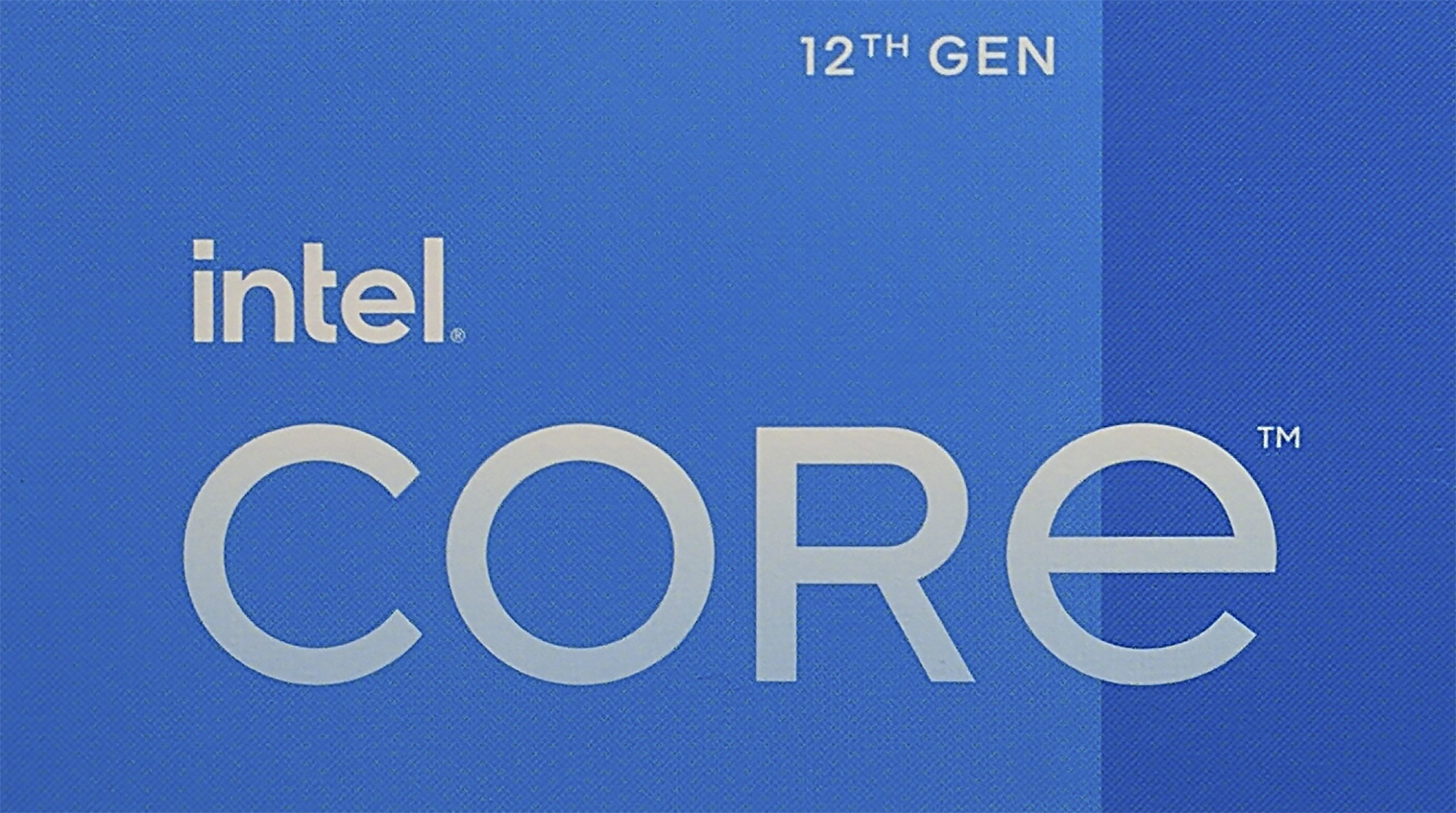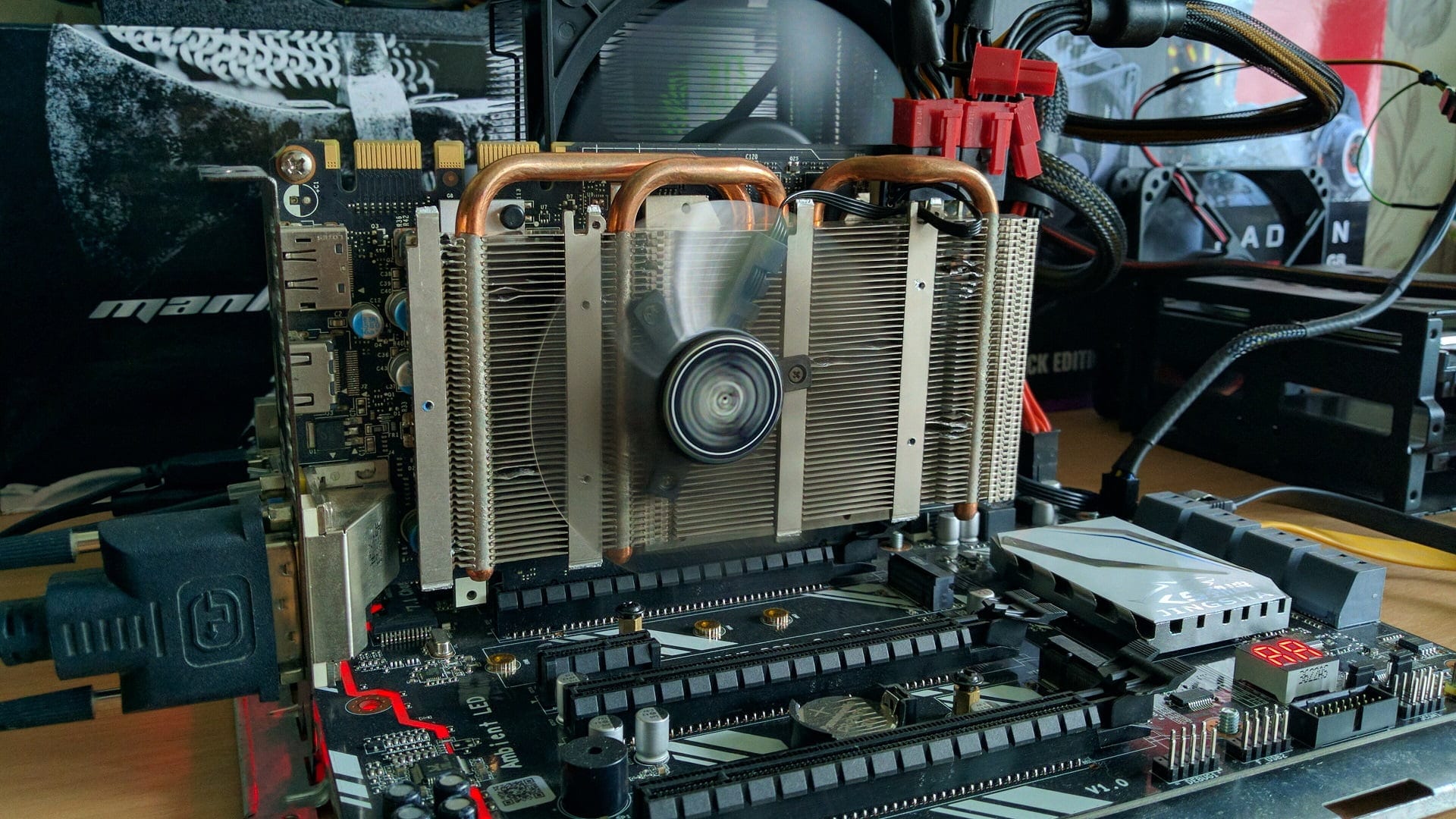
Often, AMD and NVIDIA, when releasing a new line of their video cards, try to outperform each of the previous models of the previous series in performance. In order to make it clearer what I mean, I will give a few very clear examples:
The GeForce GTX 260 was head and shoulders above the 9800GT, the GTX 460 was significantly faster than the GTX 275, and even the GTX 280 brought the long-awaited DirectX 11 support. The GTX 460 was followed by the GTX 560 and GTX 560 Ti – and even though the latter was not faster than the GTX 470, the “five hundred and sixtieth” was much more economical, colder and more compact than the large, hot and voracious GTX 470.
Next in line were the GTX 660, as well as its older brother, the GTX 660 Ti: and both of them “wiped out” the GTX 570. Moreover, after the optimization of the drivers under the pressure of the GTX 660 Ti, even the monster of the “five hundred” GeForce GTX 580 series fell. In theory, the next mid-budget video card was supposed to continue the established tradition and become either faster, or colder, or more economical. But the “green giant” decided otherwise.
In such a simple way, we got to the main character of today’s article – the GeForce GTX 760 video card. Unfortunately, this card could not surpass the GTX 670, moreover, it did not always turn out to be significantly faster than the same GTX 660 Ti (depending on the game, GTX 760 was about ~ 10% ahead of GTX 660 Ti)! In addition, compared to the GTX 660 Ti, the power consumption of the GTX 760 only increased.
This is exactly how things were back in 2013. In the same article, we will try to find out if something has changed after 7 years: Is the GTX 760 video card capable of withstanding its older brother, the GTX 670.
Video card
The GeForce GTX 760 presented in this material is a slightly modified NVIDIA reference sample, manufactured by Zotac, model AMP !. Unfortunately, the proprietary cooling of the adapter has long since become dilapidated and broken in some places. So, instead of two old 75mm fans, we decided to install one 90mm fan from the Palit GeForce GTX 1060 graphics card that died last year on a battered but native heatsink:
Of course, after such manipulations, the cooling system finally lost its presentation and outwardly looks extremely unattractive (I would even say unpleasant). Nevertheless, the acquired acoustic comfort after such changes seemed to us much more important than the appearance of the outdated video card: after replacing the proprietary fans, the GeForce GTX 760 stopped emitting noticeable noise and at the same time did not warm up above 85 degrees even in the FurMark stress test.
Just like the GTX 670, the GTX 760 requires two additional power connectors to function properly:
Board and power system
Unlike the Gainward GeForce GTX 670, which in comparison with the reference GTX 670 has undergone a more serious revision by the Chinese engineers, the Zotac GeForce GTX 760 AMP! almost completely repeats the reference design of the GTX 760 from NVIDIA:
The same NCP5392P controller produced by ON Semiconductor is responsible for powering the GPU, as in the previously reviewed GTX 670. It controls four phases with MDU1517 MOSFETs and R22 chokes. The GDDR5 video memory, in turn, is powered from two phases with M3807M MOSFETs and R33 chokes:
GPU and memory
The heart of the GeForce GTX 760 is the GK104-225-A2 GPU. Compared to its top-end configuration used in the GTX 680 and GTX 770 (GK104-400-A2 and GK104-425-A2), it lost two SMX units, which reduced its physical processing power from 1536 stream processors and 128 texture units to 1152 and 96 respectively.
This is a rather serious GPU simplification, and in particular, it is striking when comparing the characteristics of the GK104-225-A2 with the previously tested GTX 670 and its GK104-325-A2 GPU: in comparison, the GTX 760 chip has been weakened from 1344 stream processors and 112 texture units, down to 1152 and 96, respectively.
Nevertheless, the “green giant” nevertheless reached the performance of the GeForce GTX 760 video adapter to the performance of the GTX 670. But due to the serious cuts in computational units, NVIDIA engineers had to use the only remaining method of accelerating the video card – increasing the frequency of the GPU and GDDR5.
As a result, as expected, this approach became not the most profitable in terms of power consumption of the resulting GTX 760: the budget adapter of the 700 series became noticeably more voracious than the 600 series pre-top and in this regard reached the top GTX 680 with its 180 watts.
Frankly speaking, it is completely unclear why NVIDIA did this trick with a new, and in fact, completely unnecessary additional configuration of the usual GPU GK104. After all, in fact, all that was required was to rename the existing GTX 670 to GTX 760 and raise its frequency literally by a couple of percents; Do exactly the same as the “green giant” eventually did with the GTX 680 and GTX 770 (physically, the characteristics of these cards are absolutely identical, except for the base frequency).
Summing up the hardware part of the GPU of the GTX 760 video card, I would like to note that, fortunately, NVIDIA did not cut ROP units. The GK104-225-A2 chip retained the maximum of 32 ROPs available to it.
Moving on to the GTX 760 video buffer.
As video memory, the Zotac GeForce GTX 760 AMP! uses the same eight 2-gigabit (256-megabyte) SK Hynix GDDR5 chips labeled H5GQ2H24AFR as the previously tested GeForce GTX 670:
According to information from the official Hynix website, this memory is designed for an effective frequency of 6000 MHz, but in the case of the presented video card, the manufacturer decided to increase (and in fact overclock) it to 6200 MHz.
Separately, I would like to note that H5GQ2H24AFR chips are quite often found on cards of the GTX 600 and GTX 700 series – both on 2 GB and rare 4 GB versions (with the exception of the GTX 770, this card often has 2Gb or 4Gb 7000MHz Samsung chips).
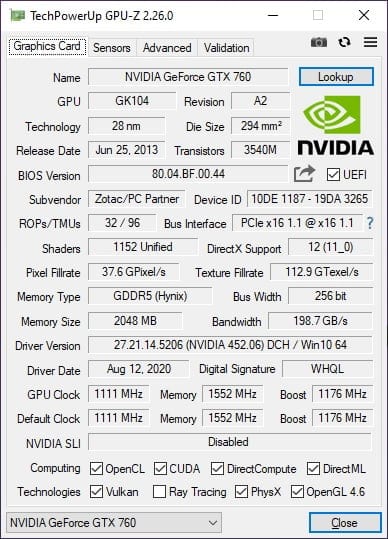
The base frequency of the GPU is 1111MHz, and the maximum declared by the manufacturer is 1176MHz. What is confirmed in most games: the frequency of the GPU is indeed at around 1176MHz.
The maximum recorded voltage of the GPU in games stopped at around 1.200 volts, which is 0.025 volts more than the GTX 670.
In the FurMark stress test, the GPU frequency of our GTX 760 sample was 1071MHz at 1.100 volts. This is quite normal because the video card runs into its own power limit (Power Limit) set at 170 watts:
Now compare these numbers with the GTX 670:
In the same stress test FurMark, its core voltage at the base power limit was 1.037 volts, with a TDP of 151 watts. Thus, a more recent GTX 760 can consume 20 watts more power and therefore heat up more.
Nevertheless, do not forget that in both cases we used non-reference samples of video cards, which is why their voltage and power consumption parameters may slightly differ from those set by default by NVIDIA. Therefore, the results obtained cannot be called representative of the GTX 670 and 760 references.
On the other hand, it should be taken into account that these most notorious reference samples are extremely rare, and literally a month and a half after their release, they are replaced by their own developments from NVIDIA partner manufacturers. So, in general, I believe that the obtained data on power consumption and heat dissipation, indirectly, can be projected onto the rest of the GTX 670 and 760 cards.
All that remains is to find out if the extra voltage and higher frequencies can help the GeForce GTX 760 outperform the GTX 670.
Test setup:
- Processor — Xeon E5-2630L v3@2800-2900MHz (unlocked Turbo Boost frequency);
- Video card — Zotac AMP! GeForce GTX 760 2GB DDR5 (stock frequencies, Power Limit 100%) and Gainward GeForce GTX 670 2GB DDR5 (stock frequencies, Power Limit 100%);
- Motherboard — Kllisre X99-D8 (AD12) with modified bios;
- RAM — G.SKILL DDR4@1866MHz 4 x 2GB F4-2400C15S-4GNT, with a total capacity of 16GB (delays 10-10-10-24);
- SSD — KINGSTON 120GB SA400S37120G;
- HDD — Seagate 2TB ST2000DM008-2FR102;
- Power supply — Chieftec GPS-1250C.
Games and graphics settings:
All games featured in the GTX 670 benchmark have been updated to the latest version.
- Assassin’s Creed Odyssey — resolution 1920×1080 (render 1920×1080), low graphics quality settings;
- Control Ultimate Edition — resolution 1920×1080 (render 1366×768), low graphics quality settings;
- Counter-Strike: Global Offensive — resolution 1920×1080 (render 1920×1080), high graphics quality settings;
- Destiny 2 — resolution 1920×1080 (render 1920×1080), medium graphics quality settings;
- For Honor — resolution 1920×1080 (render 1920×1080), high graphics quality settings;
- Fortnite — resolution 1920×1080 (render 1920×1080), high graphics quality settings;
- Horizon Zero Dawn ( testing was carried out on patch 1.03) — resolution 1920×1080 (render (70%) ~ 1280×720), ultra-low graphics quality settings;
- Red Dead Redemption 2 — resolution 1600×900 (render 1600×900), ultra-low graphics quality settings;
- Remnant: From the Ashes — resolution 1920×1080 (render 1920×1080), medium graphics quality settings;
- Outer Worlds — resolution 1920×1080 (render 1920×1080), low graphics quality settings;
- Tom Clancy’s The Division — resolution 1920×1080 (render 1920×1080), medium graphics quality settings;
- Tom Clancy’s The Division 2 — resolution 1920×1080 (render 1920×1080), low graphics quality settings;
- Watch_Dogs 2 — resolution 1920×1080 (render 1920×1080), high graphics quality settings;
Performance testing in games was carried out using the benchmark built into the MSI Afterburner program. The final result recorded the average frame rate obtained in five runs of the benchmark.
We figured out the testing methodology, let’s now proceed to review the data obtained.
Assassin’s Creed Odyssey
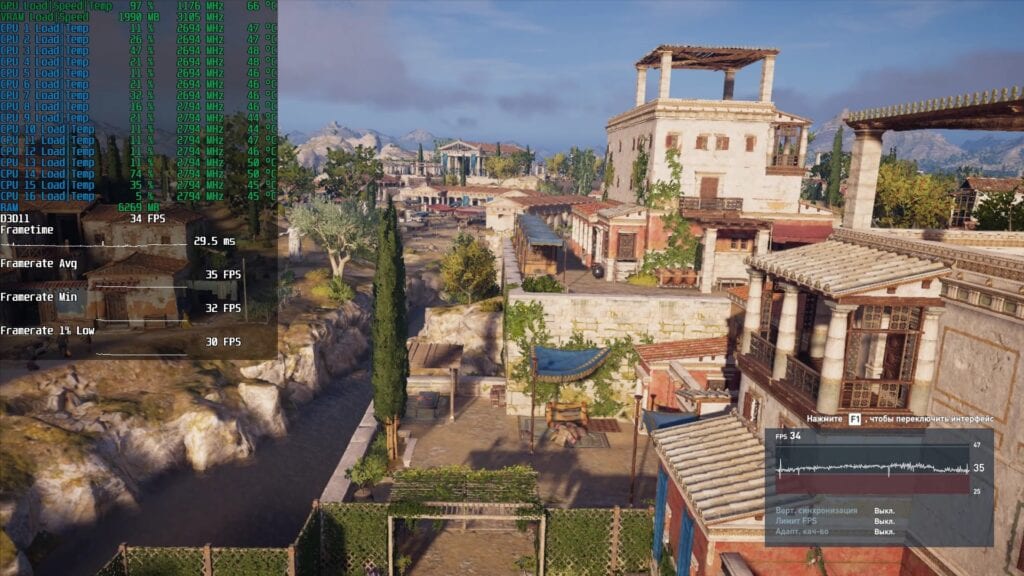
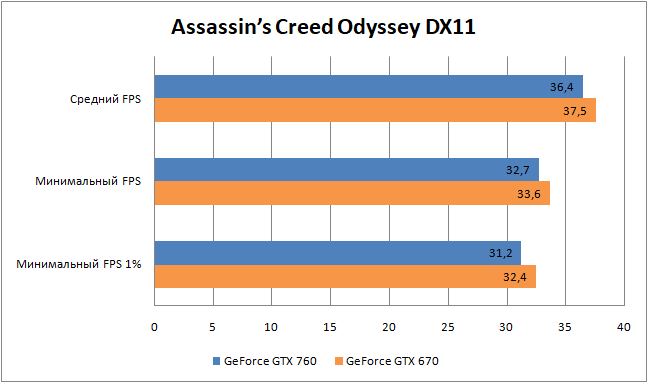
In the current part of the Assassin’s Creed franchise, the GTX 670 shows a slight edge over the GTX760. However, it cannot be said that it is really noticeable by eye: without MSI Afterburner monitoring enabled, you will hardly feel the difference. And running ahead, I will say that approximately the same picture awaits us in the overwhelming majority of test games.
Control
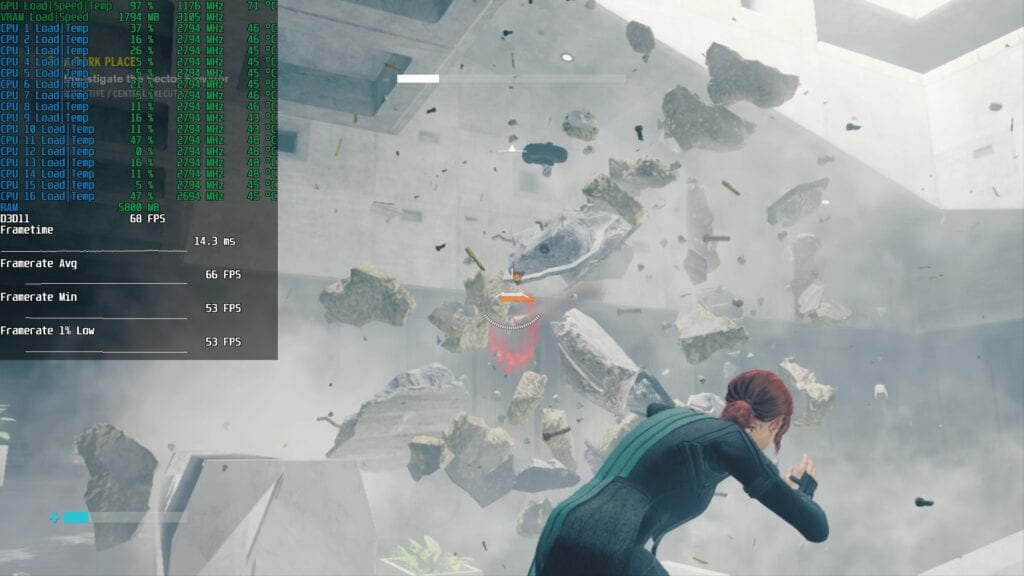
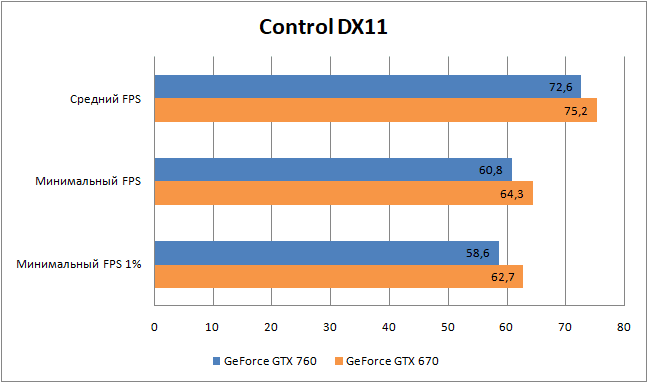
In the stunning creation of the genius Sam Lake and his studio Remedy Entertainment “Control”, the results are almost identical to those from “Assassin’s Creed Odyssey”. Both cards show an acceptable FSP, but the GTX 670 is still slightly faster than the GTX 760.
CS:GO
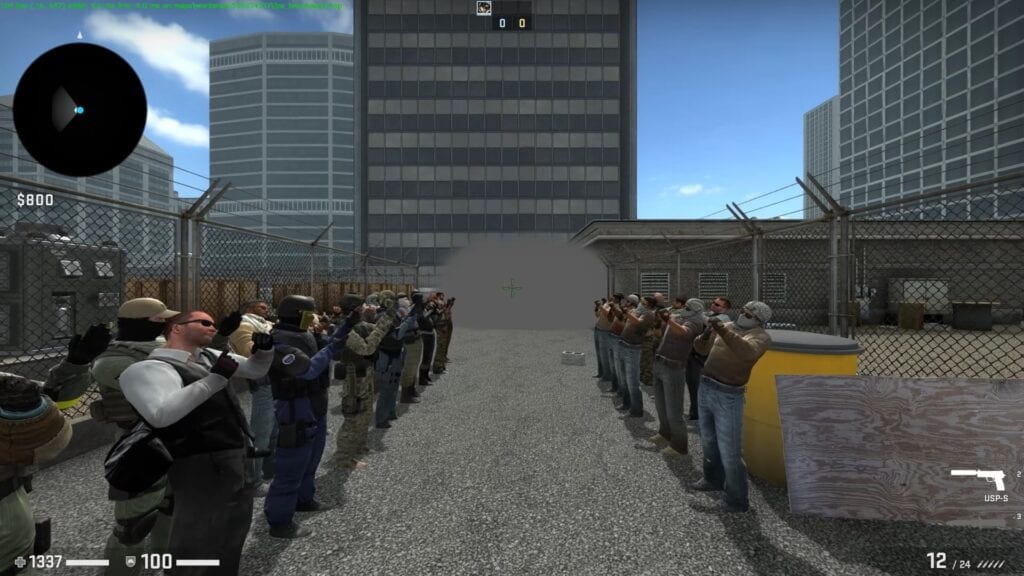
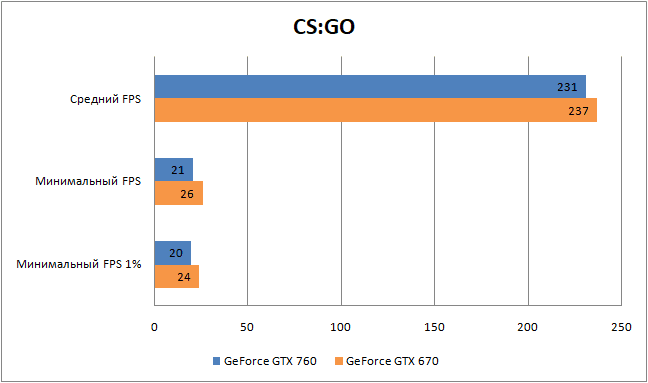
And only in the e-sports discipline Counter-Strike: Global Offensive, the balance of power changes much more: the minimum frame rate obtained on the GTX 760 video card is quite noticeably behind the GTX 670. Taking into account that the minimum shot result itself is at the level of unplayable 21-26FPS, 5 additional frames will obviously not be superfluous.
Most likely, a larger number of hardware texture units played into the hands of the GTX 670. However, in practice, this is not particularly important, because if you read the material about the GTX 670, then you know that in real gameplay there are no such drawdowns and FPS is kept at acceptable levels.
Destiny 2
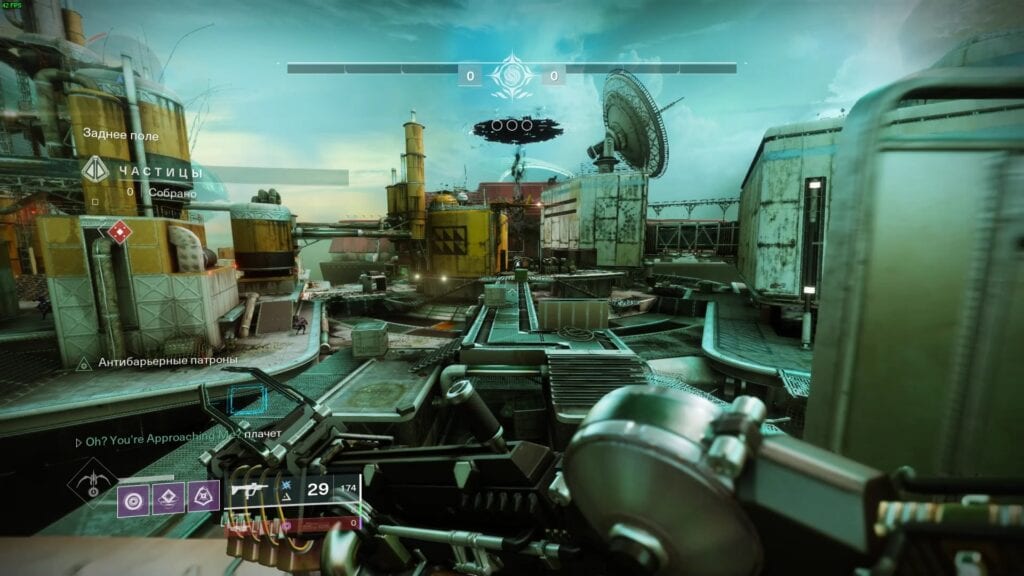
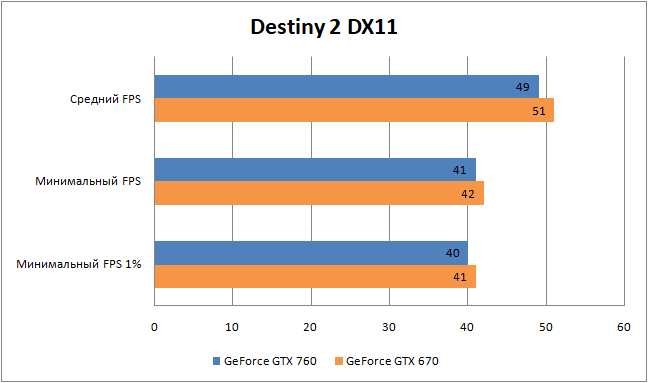
In Destiny 2, the situation is similar to Control and Assassin’s Creed Odyssey: the difference can only be felt by monitoring the FPS. Both cards do equally well with the Bungie project. Nevertheless, before flying to the Crucible, it is still better to lower the settings to the minimum.
For Honor
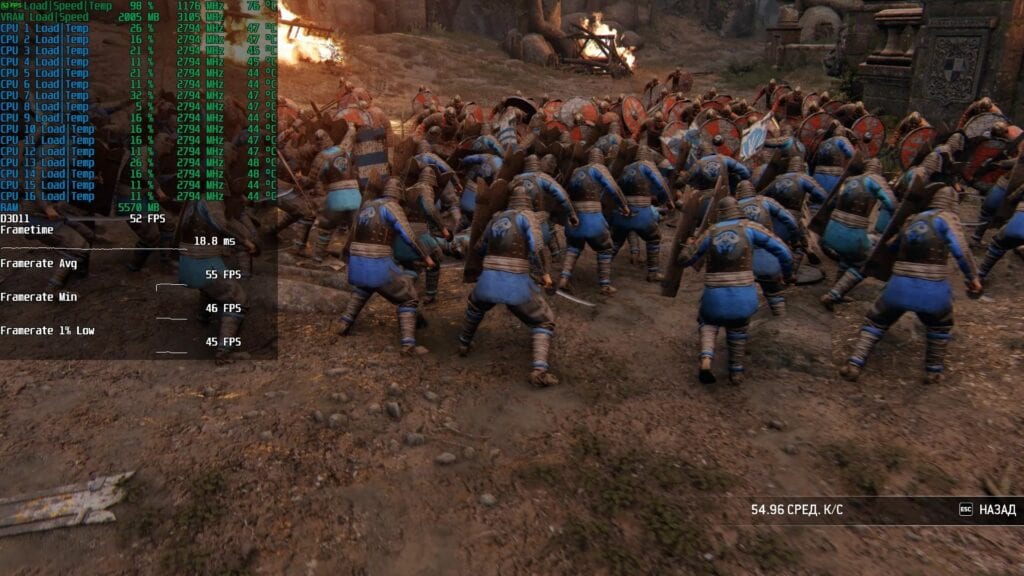
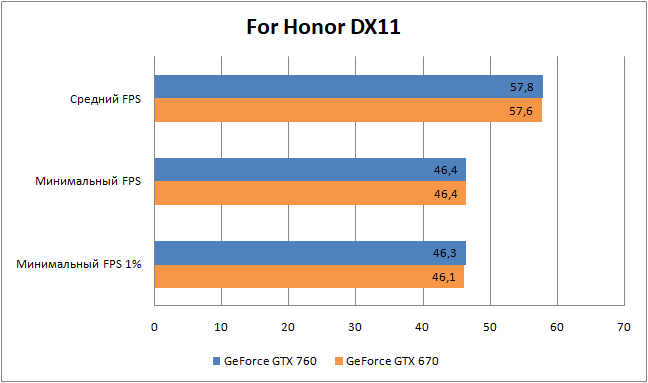
In the game For Honor, any comments are superfluous: GeForce GTX 670 and GTX 760 show literally absolutely identical results!
Fortnite
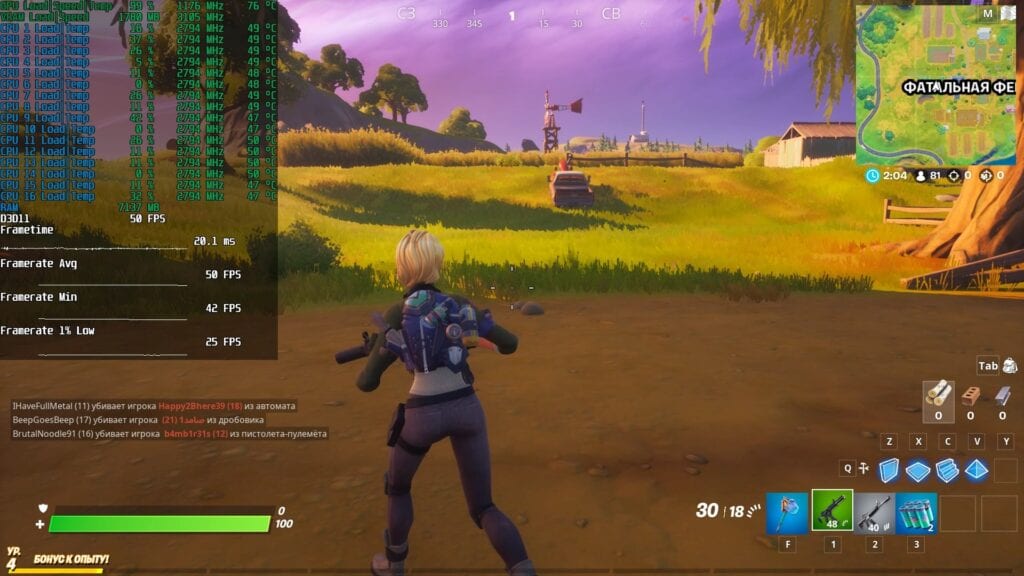
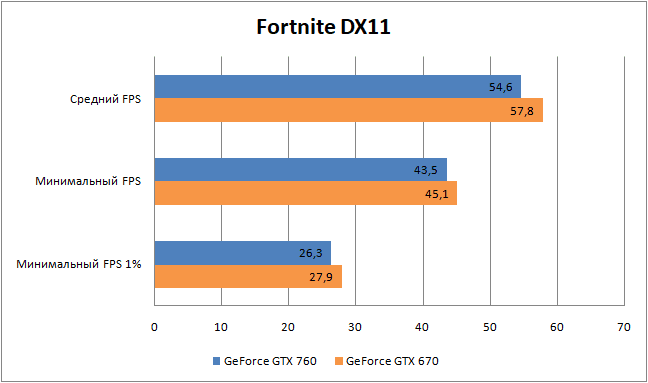
As I said in one of my previous posts: testing video cards and processes in Fortnite is not very rewarding. It is quite difficult to get recurring events in the game, and therefore, the final results are almost impossible to adequately compare.
In fact, we just need to test this game because of its popularity. So by calculating the average frame rate among five runs of the game on each video card in the “battle royale”, “one player” mode, it turned out that the GTX 670 won by a small margin.
Horizon Zero Dawn
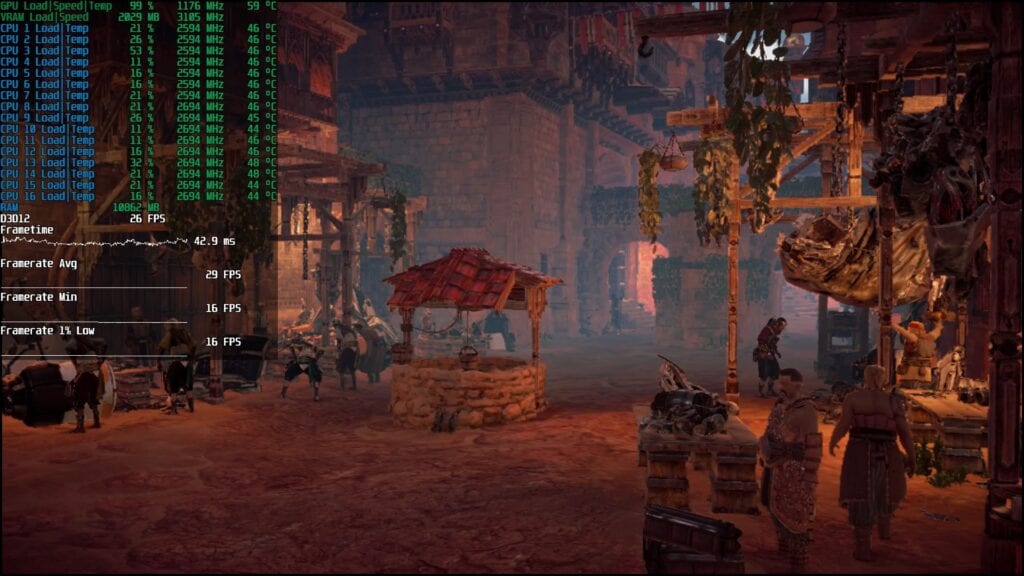
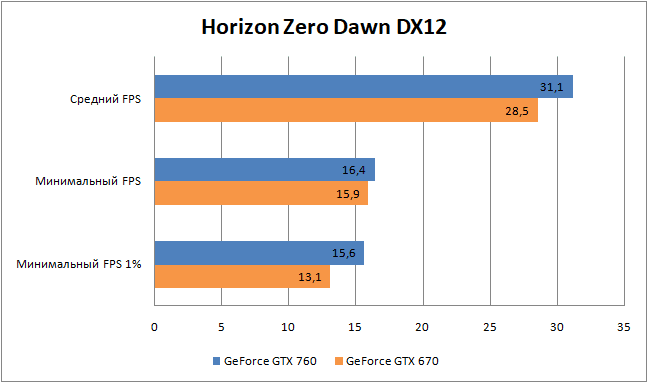
And here it is, the first surprise of this bench session! Just look at the results obtained in Horizon Zero Dawn: all three FPS indicators are higher in the GeForce GTX 760! Whether this is such a “unique” patch 1.03, or here, given the acute shortage of video memory, the frequency of the GDDR5 chips turned out to be the dominant parameter for increasing performance than the physically more powerful GTX 670 chip is not clear for certain. But the fact remains: in Horizon Zero Dawn, the GTX 760 video card turned out to be faster than its older brother from the previous generation.
Red Dead Redemption 2
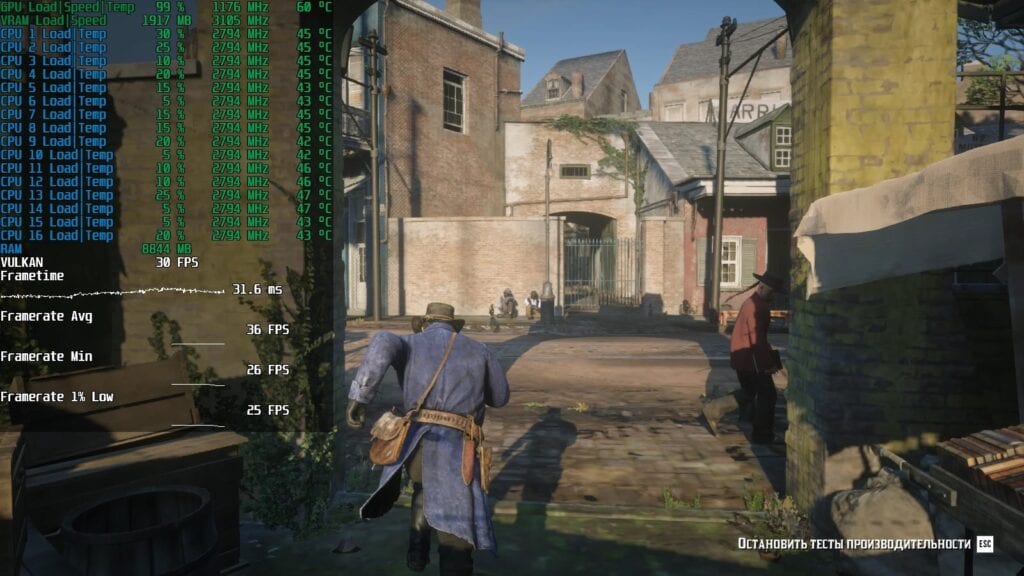
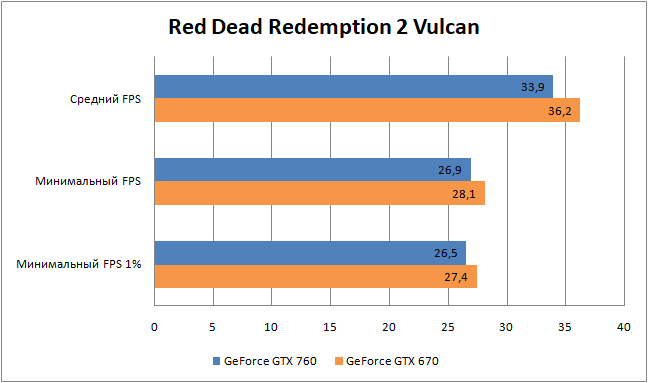
In RDR 2, everything is back to square one. The GeForce GTX 760 again loses to the GTX 670 by a few percent, which, as I said, will be virtually impossible to notice in real gameplay.
Remnant
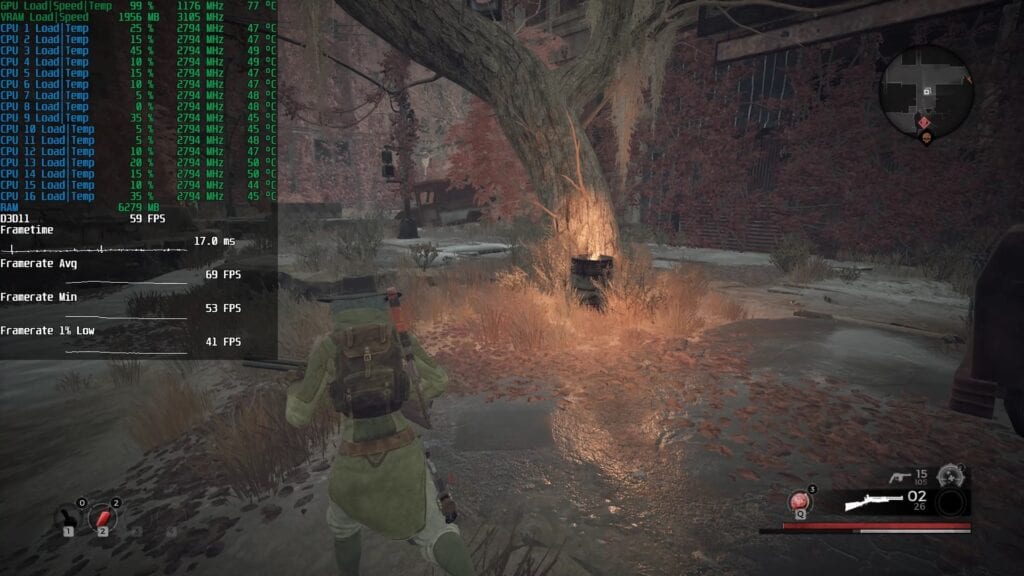
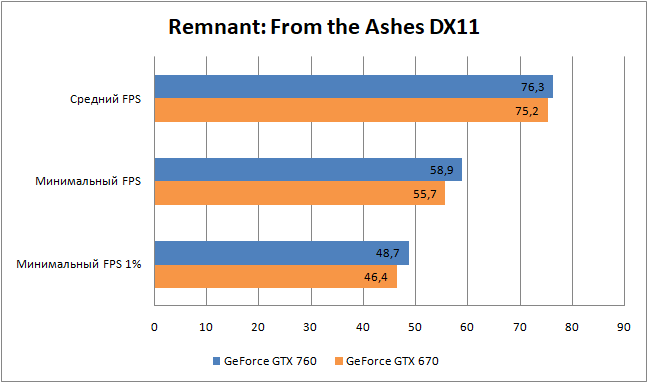
Souls-like action game Remnant: From the Ashes was the second and also the last game in which the GeForce GTX 760 was able to “snatch victory out of the turbine” of the GTX 670. However, as you probably already noticed from the graph the advantages – this victory for Pyrrhus: much more power consumption and the heat dissipation of the GTX 760 isn’t worth it.
Outer Worlds
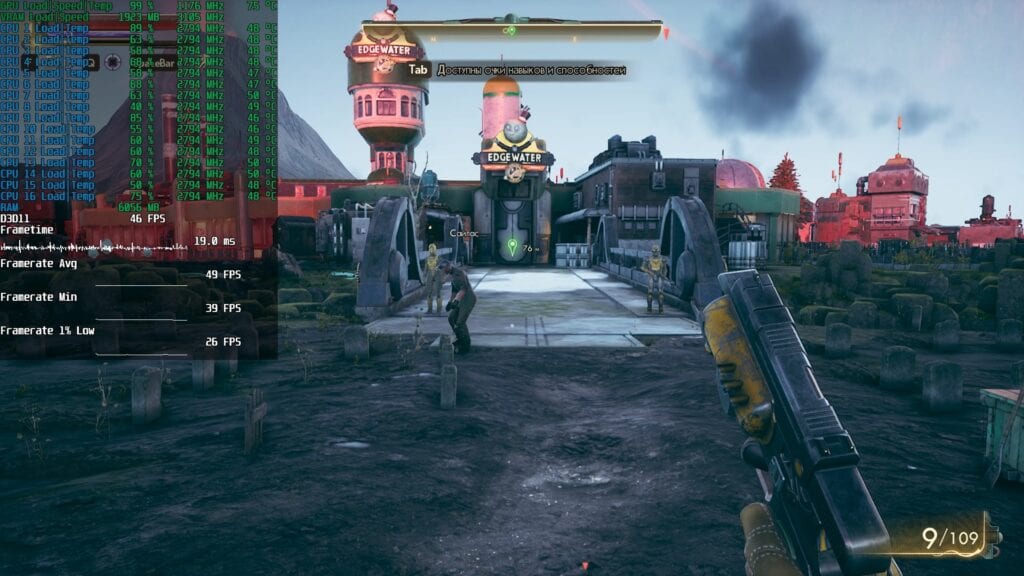
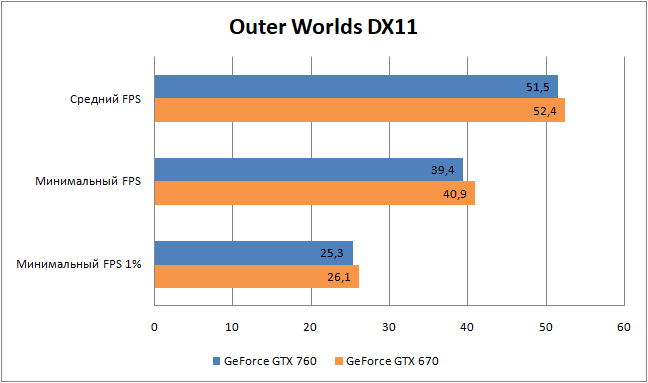
Testing in the game Outer Worlds tells us about the practical parity of the GTX 760 and GTX 670.
The Division
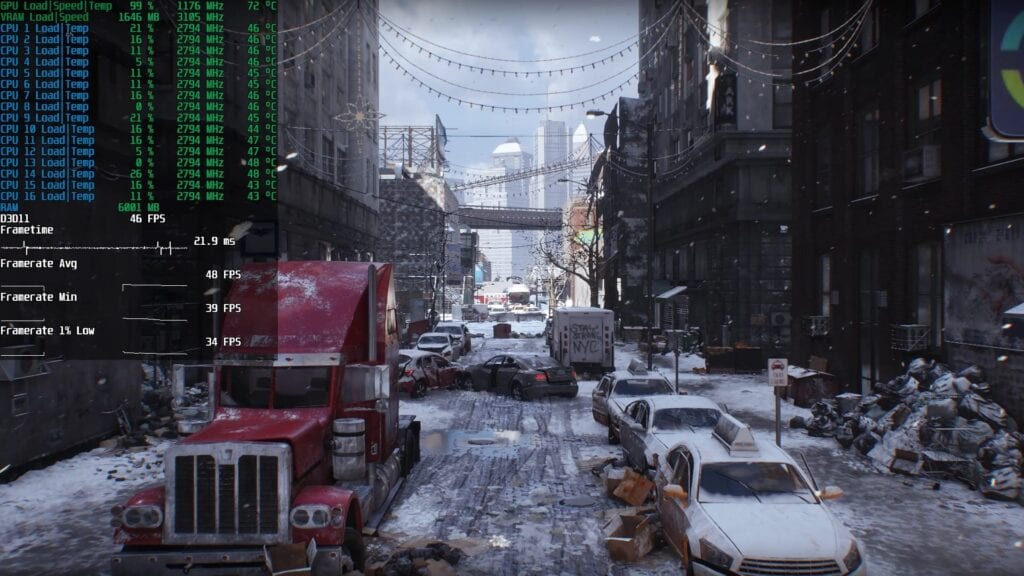
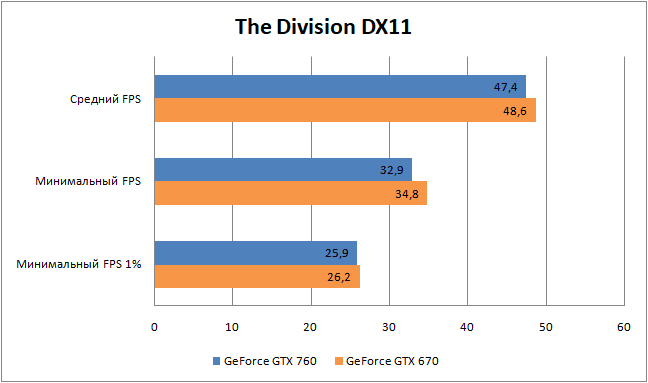
Nothing changes in the recently distributed free of charge The Division. Both video cards reluctantly cope with the game at medium graphics quality settings. If you need a higher frame rate, then you still have the option to lower the settings to the minimum values.
The Division 2
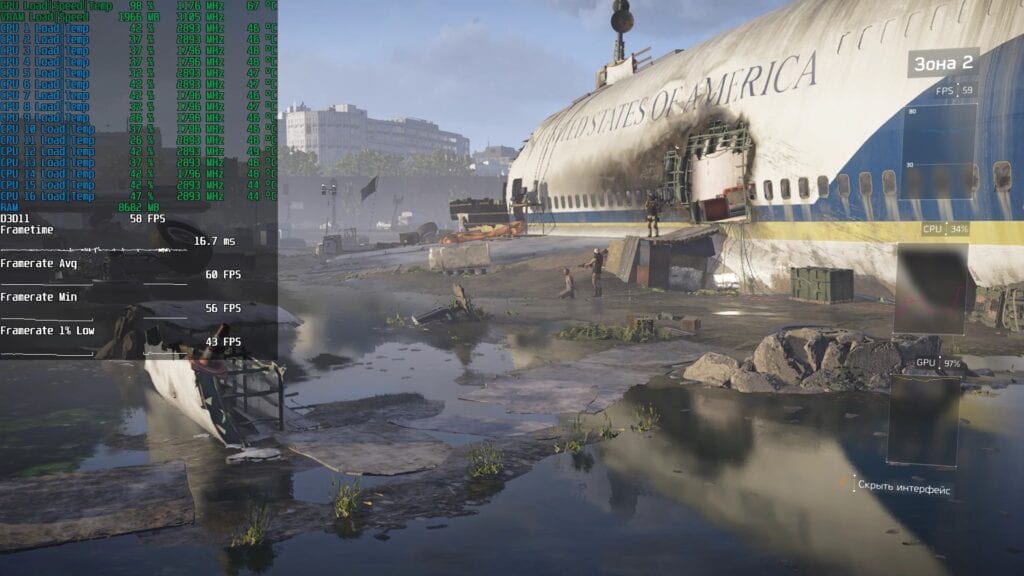
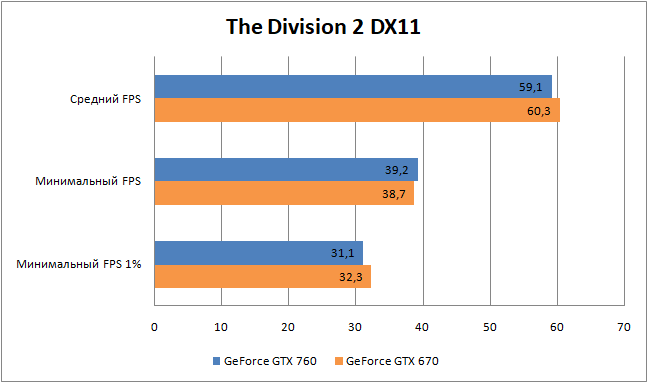
In the second part of The Division, we see the already familiar balance of power. Both cards show almost identical results and allow you to get an average FPS of around 60. But keep in mind that testing was carried out with the minimum graphics settings. If you want to squeeze out an additional couple of dozen frames, you will have to take drastic measures and lower the render resolution.
Watch_Dogs 2
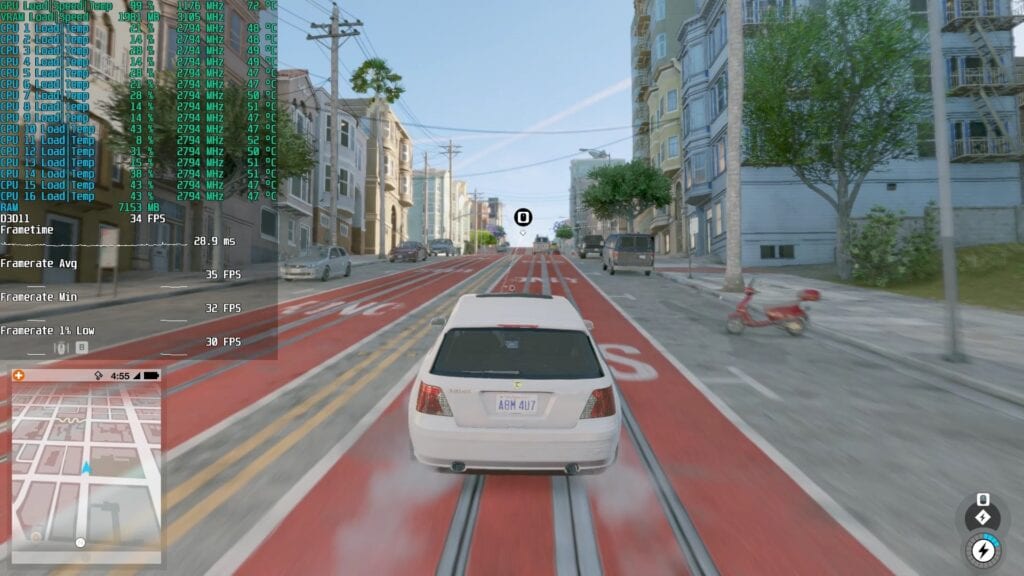
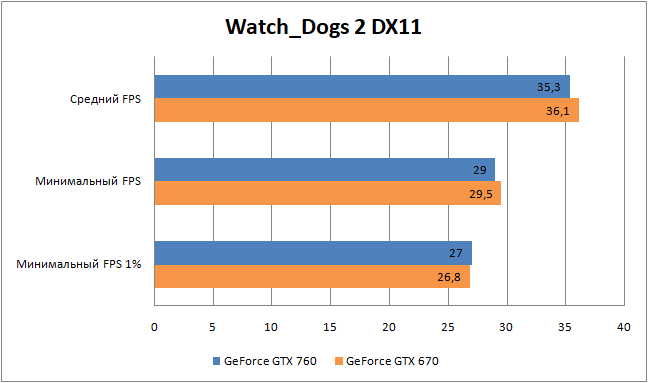
The last game in our test, Watch_Dogs 2, was also unable to determine a clear favorite: both the GTX 670 and the 760 show approximately the same FPS.
Below is a video of testing the GeForce GTX 760 in 13 games. Please note that for the above graphs, the FPS indicators were taken without “eating” some video recording performance. Therefore, in the video, the frame rate values are slightly lower than in the graphs.
Conclusion
After a series of tests, it turned out that the GeForce GTX 760 video card turned out to be a more voracious and hot copy of the GeForce GTX 670. And this unpleasant feature in no way allows the GTX 760 to become more profitable than its older brother from the “six hundred” series. Nevertheless, if you are looking for an ultra-cheap video card ($35-50) and the issue of power consumption/heat dissipation (as well as the potential dump of the GPU) does not bother you at all, then the GTX 760 and the GTX 670 will suit you equally.
As a result, the main question of the previous and current materials can be answered with confidence: Video cards, which are based on the pre-top GPU GK104 on the Kepler architecture, are really still able to delight their owners in 2020. Even if the FPS when using these adapters is not very high, and the graphics settings are far from “ultra” values, it will be extremely difficult to challenge the very decent performance of 7-year-old video cards.
Well, in conclusion, I still have to add a fly in the ointment and re-quote my own words from the first part of this line of materials:
Even if you are extremely tightly constrained by finances: Better wait, save up some money and turn your attention to slightly more expensive cards like Radeon RX 470 (4GB ) or GeForce GTX 1060 (3GB). The performance of these video adapters is at a completely different level, and at the same time, their price is sometimes only a couple of tens of dollars higher than that of the same GeForce GTX 670.
In particular, these words refer to video cards Radeon RX 470. At the time of this writing, its price on the secondary market starts at $70.
The reason for such strict recommendations, as you probably already guessed, is precisely the venerable age of video cards of the GTX 600 and 700 line. 8 and 7 years for this kind of hardware is a frighteningly long service life and most likely, you can get either an already warmed up/soldered card, or at all – a corpse showing only artifacts on the screen (although it is obvious that a similar outcome can await in the case of the purchase of a Radeon RX 470 or GeForce GTX 1060, but with these cards, the chance to run into a “dead” card is an order of magnitude lower) …
The final decision, of course, is yours. I just tried to warn you.
If you liked the article and would like to see more similar articles on this resource, then support our site on Patreon! The main goal is to expand the component park and improve the quality of testing: replacing the HDD with a voluminous SSD, purchasing a capture card to reduce the impact of gameplay recording using ShadowPlay on the final results, and so on).
